Guides
About choosing, using and maintaining different types of assistive products.
Activity Chairs
This guide gives you a general overview of where and how you may use an activity chair in your home or at the workplace, what to consider when choosing an activity chair, and how to use it in a safe way.
Assistive products for cooking
In this guide, you can find an introduction to assistive products for cooking, which may be useful, if you have a physical disability, severely reduced sight, or special needs due to a cognitive disability.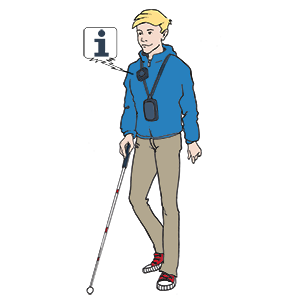
Assistive Products for Electronic Orientation
Persons with reduced sight or cognitive difficulties may experience challenges in relation to finding their way and orientate. There are various assistive products for electronic orientation, which may be of assistance. In this guide, you will get a general idea of the various types and their functions.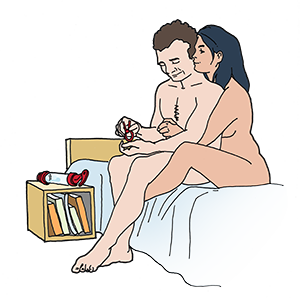
Assistive Products for Sexual Activities
If you experience limitations in relation to sexual activities, you can learn more in this guide on various assistive products that can support your sex life.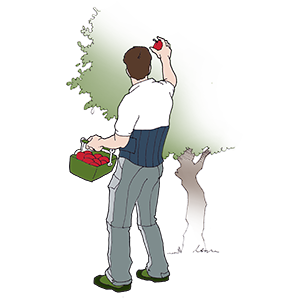
Orthoses for the Back
If you have back problems, for example in the nature of pain, lack of strength, or an asymmetric back, you may benefit from a supportive orthosis. This guide provides an overview of different types of orthoses, e.g. corsets and bandages, as well as an insight into the various applications.
Powered scooters
A powered scooter can be a helpful means of transportation if you need to cover more distance than you can walk and dont have the option to use a bicycle or a car. This guide introduces you to the various types of powered scooters and provides advice on how to move about on a powered scooter.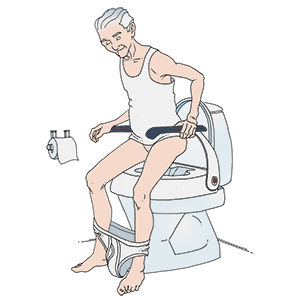
Raised toilet seats
If you have difficulties getting up from or sitting down on the toilet, a raised toilet seat may be helpful. This guide describes different types of raised toilet seats and explains what you need to consider when choosing a raised toilet seat.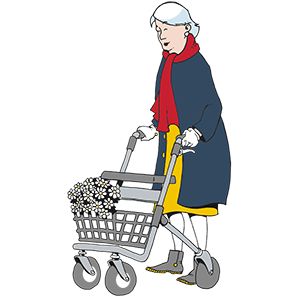
Rollators
A rollator can give you support if you have difficulty walking, e.g. due to weak muscles, joint pain or impaired balance. In this guide, you can read more about, e.g. how to choose a rollator that suits your needs.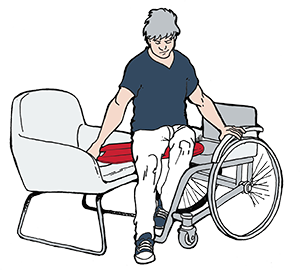
Sliding boards, Sliding products and Swiveling Cushions
This guide introduces different types of small assistive products for transfer, which you can use without help from others. The assistive products can be helpful if you are having trouble getting in and out of a car or if you find it difficult to transfer between a wheelchair and an ordinary chair.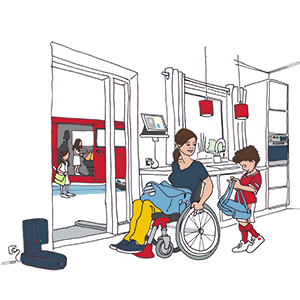
SmartAT for Household and Daily Life
More and more tools for household and daily living are connected to the internet, use sensors, voice control, GPS, Bluetooth, etc. These products are often referred to as SmartHome technology, and they are used to facilitate household chores and daily tasks. For people with disabilities, these products can enable activities that would otherwise be difficult or impossible to perform. In that sense, the products can function as assistive products Smart Assistive Technology (SmartAT).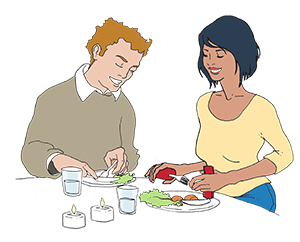
Special Cutlery
This guide provides an overview of various types of cutlery with unique designs or special features. The guide also offers a range of examples of when it may be relevant to use special cutlery.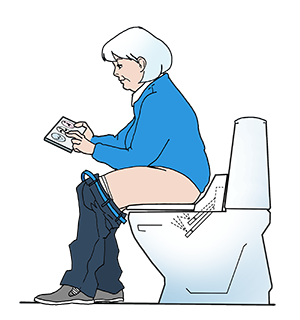
Toilet seats with douche and air drying function
This guide is about toilet seats with douche and air drying function for those who have difficulty managing their personal hygiene independently and wish to avoid needing assistance from others.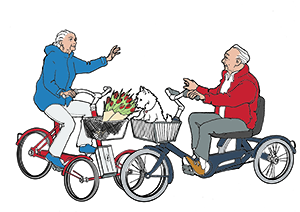
Tricycles
A tricycle can be a helpful solution if you have difficulty maintaining balance on a bicycle. This guide introduces various types of tricycles and explains what to consider when choosing one.
Urine Collectors
If you experience issues with your bladder, incontinence, or find it problematic to use a toilet, especially during outings or travels, you may benefit from assistive products designed for urine collection. This guide provides information on various types of urine collectors.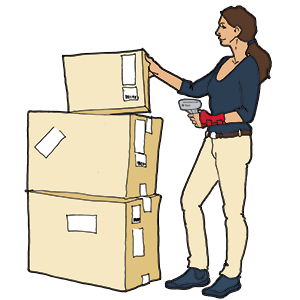
Wrist, Thumb, and Finger Orthoses
This guide provides an overview of different types of wrist, thumb, and finger orthoses. The guide helps you distinguish between the functions and effects of the various products.Displays 1-15 of 15


